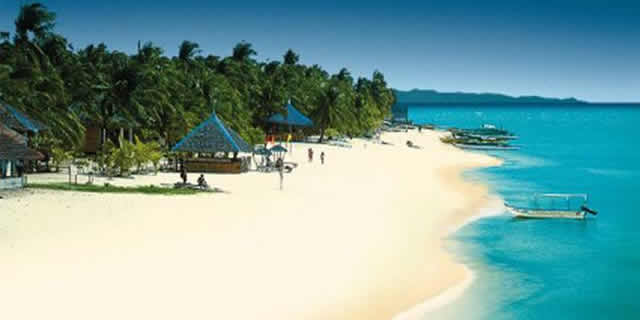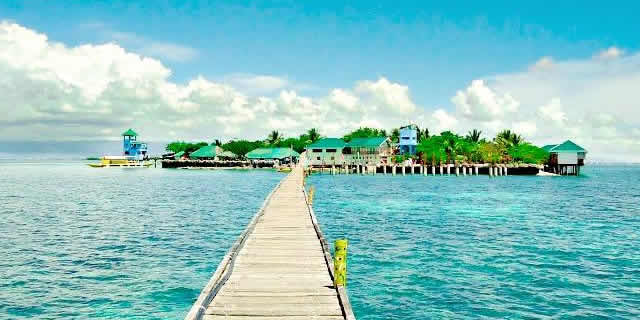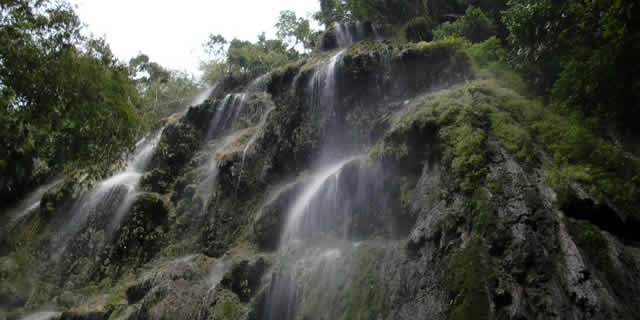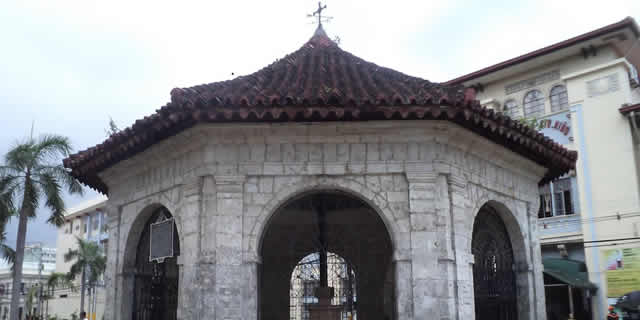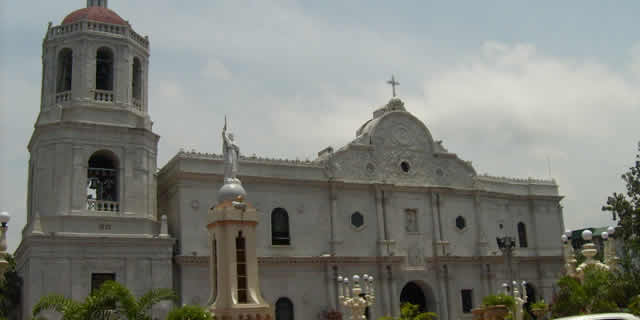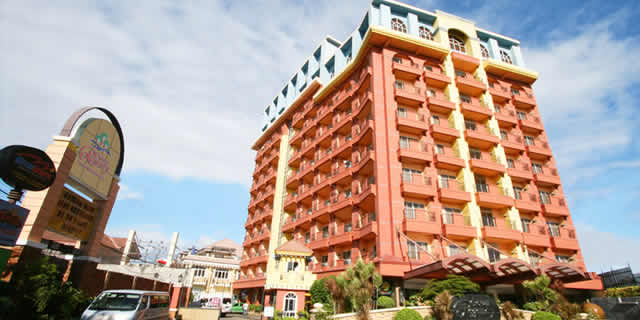About Central Cebu
CENTRAL CEBU HISTORY
A Glance of Its Past
Cebu came from the word “SEBU” meaning fat animal. Many years have passed the Spaniards, it was a fishing town governed by Rajah Humabon.
Central Cebu transformed in more ways than one, but always for the better. From a sluggish fishing town to a fledgling trading port in the year 1521, from the first Spanish township named Villa del Santisimo Nombre de Jesus in year 1575 to a municipality in the year 1901, Central Cebu finally became a chartered city on the 24th of February 1937. Being the oldest and the first city in the country antedating Manila by 7 years, having the oldest street and oldest school and being the foundation of Christianity in the Far East (i.e. the Magellan’s cross which planted in Central Cebu as a symbol of residents embracing the Christian faith), Central Cebu is stuffed with historical firsts.
Mr. Miguel Lopez de Legazpi and was then been exhorted by the men construct to least the eldest fort in the place or country : the Fort San Pedro. As Spain reinforced as its been colonization efforts, and resentful islanders showed disapproval by way of sporadic attacks against the colonizers. The revolt paved the way to the erection of Fort San Pedro, a Spanish military monopoly.
However, the fort embarked to the indicators of the local Central Cebuanos the when Americans systematic by Commodore George Dewey subjugated the Spanish fleet in December 1898 in the Battle of Manila Bay. With the American rule in full force in 1901, then Senate Pro Tempore and late President Sergio Osmeña, Sr., and then Congressman and Majority Floor Leader in the House of Representatives, the late Senator Manuel Briones dynamically solicited for Philippine Independence.
The streets of Tres de Abril and V. Rama were the spots of a furious battle on April 3, 1898 when General Leon Kilat of Bacong, Negros Oriental directed the revolution against Spanish colonialism. The Spaniards disturbed asylum at the Fort San Pedro and three days of uncompromising strikes would have brought triumph for the insurgents were it not for the propitious arrival of the Spanish armada.
February 24, 1937 was an modernization in the Central Cebuano history as Central Cebu was agreed the convention by the virtue and charity of Commonwealth Act No. 58 enacted by Congress on October 20, 1936. The previous Senator Vicente Rama, hitherto representative of Central Cebu’s 3rd district was instrumental as author and sponsor of the bill. It was at that time that Secretary of Interior and Local Government Elpidio Quirino appointed the mayor and board members of Central Cebu City in his capacity as representative of Manuel Quezon.
Soon after the arrival of the Japanese army in Central Cebu City on April 10, 1942, the entire province became the principal Japanese base due to its strategic location and substantial population. Central Cebu lastly saw the light of freedom in March 1945 when American liberation forces landed in Talisay town. Liberation came in full circle in March 1946 and to restore law and order, a civil government called as Philippine Civil Affairs Unit (PCAU) was established in the city.
In April 1965, the entire Christian world focused its courtesy on Central Cebu, was considered as the cradle of Christianity in the Far East as it played host to the 400th Anniversary of Christianity in the Philippines. The celebration tinted the contributions of Miguel Lopez de Legazpi and Fray Andres de Urdaneta in proselytizing Christianity by way of establishing a Spanish reimbursement in the province. In a country where Catholics predominate, the conferment of the San Agustin Church to the title Basilica Minore del Santo Niño proved to be a momentous occasion as Rome sent its representative Papal Legate, His Eminence Ildefonso Cardinal Antonuitte.
CENTRAL CEBU GEOGRAPHY & NATURE
Central Cebu is an elongated island around 250 kilometers from North to South and 45 kilometers across at its broadest point. Central Cebu is central to the Philippine archipelago and some 600 kilometers south of Manila.
This location combined with a sheltered deep water harbor has made Central Cebu the base for most of the country’s domestic shipping and the gateway to the central and southern Philippines.
Central Cebu island’s area of 5,000 square kilometers chains over 3 million people of whom 1.5 million live in Metro Central Cebu.
The east and west coasts are separated by a mountainous spine which increases to 1,000 meters. The environment is warm, commonly 23 to 33 degrees Celsius. Rainfall is distributed throughout the year, except for the summer months from March to May which are dry.
Beaches, coral atolls, islands and rich fishing grounds surround Central Cebu. Central Cebu’s principal setting, closeness to the bizarre, exotic tourist destination, and ready access to a variety of animals, plants and geological wonders within the island, and remoteness from earthquake and typhoon activities that are some of the special attributes which help maintain the Central Cebu’s track record. The exposure to the nature’s wonders allows busy families to recharge their batteries and relax.
Central Cebu has plenty of attractiveness. From the central mounts to the sands of corals, this island is a natural and most wonder. Most of its archipelago’s 8,120 species of flowering plants can be found in Central Cebu. 5,832 are inimitable to the country. Birds migrating from Russia stop en-route to Australia at the Olanggo Bird Sanctuary.
Mountain streams cascade from misty heights to the sea. Colorful butterflies contrast with flocks of noisy birds. Some of the world’s best scuba diving is located at the Central Cebu’s shores and there are steady detections of sea creature animals.
The amazing highlands are within 30 minutes of diving in Metro Central Cebu. Roadside clumps of fragrant plumeria (frangipanni) , giant hibiscus, and orchids delicate its own brighten way.
Gardeners will reveal in the colorfulness that has the exact nature of the Philippine plants.
Growth rapid, water abundant and soils rich make for colorful enthusiasm. Birds come to roost, scents fill the midair and the spirit is refreshed after each busy day.
CENTRAL CEBU CULTURE & HERITAGE
The Chinese saw the value of Central Cebu as a trading post in around 900AD and the island’s physical location made it the obvious place for the Spaniards to establish the Philippine’s first city.
Central Cebu became the defacto capital of the Spanish colony. Its trading central and post shipping status resulted cohesive in the remarkable range of cultures mixing good-naturally with the Malays. A unique cosmopolitan culture evolved through 400 years of Spanish rule and continued during 400 years of the influence of the Americans.
Peoples from many countries live in Central Cebu and are well integrated with the local population. The main religion is Roman Catholicism, while nearly every other religion is freely experienced.
Although pre Spanish culture is still a way of life for some mountain villagers it is often woven into the cultures of other lands then expressed in song and dance extravaganzas such as the Sinulog festival. Such fiestas creatively mingle foreign influences with local folklore.
CENTRAL CEBU GEOGRAPHICAL LOCATION
Central Cebu is positioned on the central eastern part of Central Cebu Province, an island at the center of the Visayas in Southern Philippines. As defined by the Bureau of Land Location Monument (BLLM) No. 1, Central Cebu Cadastral Survey, it is 10 degrees 17 minutes North Latitude and 123 degrees 54 minutes East Longitude. It is bounded by Mandaue City in the North and the City of Talisay in the South. On the East is Mactan Channel and on its West are the Municipality of Balamban and the City of Toledo.
TOPOGRAPHY and slope
The topography of Central Cebu City is steep and hilly with promotion success up to 900 meters above mean sea level. Flat lands are found only along the coastlines that range a few kilometers interior. Central Cebu City’s plane land occupies about 23 square kilometers, representing eight (8%) percent of its total land area but it contains over 40 barangays and about two thirds of its population.
Any plain land with its sharply inclined slopes under of its climatic condition where all the rainfall surpasses the water absorption and the capacity of its soil would suffer from soil erosion. This applies to Central Cebu City, a larger part of which is exposed to severe erosion. This includes the critical watershed areas that are mostly above 50 percent in slope.
CENTRAL CEBU LAND COVER
The increasing development of Central Cebu, the city now leads to the increasing use of its land for housing, commercial, industrial, institutional and other related activities. Farmlands remained only in the upland or hilly land areas of Central Cebu. Presently the city’s upland areas and watersheds are mostly covered with grass and shrubs with patches of corn, coconuts, bananas, cassava and vegetables. Fruit trees are also planted, particularly the interesting mango, which is an export product of Central Cebu. Very little (9.6%) of the natural forest are left in the upland areas of the city. Even the city’s watersheds are lacking in trees that are necessary for their protection.
CENTRAL CEBU GEOLOGY
Central Cebu City is made up of physically complex sedimentary and volcanic rocks that have undergone various degrees of metamorphism. There are seven rock formations or geological units in Central Cebu. Rocks that are sedimentary are constituted of sixty percent, of the city this comprises of to, Malubog Formation, Central Cebu Coal Measure , Carcar Limestone, the Recent Alluvium and Barili Limestone.
CENTRAL CEBU ELEVATION
The lowlands are generally located within elevations below 100 meters while upland areas are in elevation between 100 and 900 meters above sea level.
CENTRAL CEBU LAND CLASSIFICATION AND PROTECTED AREAS
In the Philippines only lands with eight percent slope or less are generally professed as alienable and disposable, where human settlements and cultivation of land are allowed. Higher sloping lands are to remain as forest or other special uses. But while only 28 percent of Central Cebu City is within the 18 percent slope or less range, about 64 % of the city’s lands are classified by the national government as alienable and disposable (see Land Classification Map). The rest are classified as forest or timberland. Lands classified as timberland include areas that are within the critical watersheds and other protected areas of Central Cebu.
Central Cebu City has 76.3 percent of its land covered under the NIPAS or Nationally Integrated Protected Areas System. These include the Mananga, Kotkot and Lusaran watersheds, the Central Central Cebu National Park, Sudlon National Park and Central Cebu Watershed Reservation (Buhisan). The four watersheds are considered important source of water for Central Cebu City and the rest of Metro Central Cebu. Twenty-three of the city’s 80 barangays are totally or moderately located in the four watershed areas, now declared as Central Central Cebu Protected Landscape (CCPL).
CENTRAL CEBU WEATHER AND CLIMATE
Weather and climate are determined by temperature, moisture and movement of air. The principal climate zones are defined in terms of temperature averages, which occur in the broad areas of the earth. These are tropical, polar, and temperature climate zones. The Philippines is within the tropical climate zones.
CENTRAL CEBU TEMPERATURE
Mean annual temperature 26.5 degree centigrade
Mean highest monthly temperature 34.8 degree centigrade
Mean lowest monthly temperature 20.6 degree centigrade
Coldest Month January
Warmest Month May
CENTRAL CEBU RELATIVE HUMIDITY
The city has an average relative humidity of 75 %. Relative humidity refers to the amount of water vapor in the air, expressed as a percentage of the maximum amount that the air could hold at a given temperature. The moisture or water vapor content of the air is referred to as humidity. The weight of water vapor in a given volume of air is absolute humidity. The air is said to be saturated when it contains the maximum amount of water vapor possible at a given temperature. The dew point is the temperature of the air when it is saturated. When the temperature of the air falls below the dew point, some of the water 13 vapor confined in the air condenses, clouds form, and precipitation can result in the form of rain.
CENTRAL CEBU RAINFALL
Average annual rainfall 1,636.70 mm. in the old Lahug Airport, and 1,609.70 at the Central Cebu Custom House
Rainfall decreases from February to April
Rainfall gradually increases from May to July
CENTRAL CEBU WIND VELOCITY AND DIRECTION
Average Wind Velocity 10 km./hr. varying direction
Northeast Wind (Amihan) November to May
Southeast Wind (Habagat) June to September
Typhoons usually come on October to December
Strongest typhoon occurred 1989 (typhoon Ruping)
LIVING IN CENTRAL CEBU
The quality of life is an important factor people consider when they decide to settle in Central Cebu.
Quality housing is abundant in Central Cebu and rentals are less expensive than other cities in the region. Normal power, water and communications including IDD telephone lines, mobile phone services and cable TV are available.
Health care is of a high standard, with well qualified doctors, pharmacists, dentists and nurses on call. State of the art medical diagnostic equipment is used in Central Cebu’s hospitals. The education system is good with excellent schools to tertiary levels. Many Central Cebu universities are of an international standard.
Fresh foods arrive daily thanks to the multiple shipping and air links between Central Cebu and the rest of the world. The variety of goods available ensures international standard shopping with competitive prices.
The cosmopolitan nature of the population is reflected in the restaurants and clubs in the city, offering an exciting choice of dining and entertainment.
Public transport is abundant but crowded and many residents prefer to drive their own vehicles. A new computerized traffic control system speeds traffic through Central Cebu, even in peak hour periods.
CENTRAL CEBU SPORTS AND LEISURE
Central Cebu is an island of wide choice and contrast.
Scuba diving in a coral wonderland, hiking or mountain bike riding in the hills. The door is open. Excellent golf courses, jet skis, sail boards and boating facilities are widely available.
If you wish to be indulged, there is a remarkable choice of world class resorts within easy reach for a quick weekend away.
For the indoor enthusiast, the latest computerized ten pin bowling rinks or air conditioned crush courts beckon.
Music is of a high standard and teaching of traditional and classical instruments is readily available. The importance to executives and workers of recreation facilities cannot be overemphasized. Central Cebu ensures every need is satisfied.
CENTRAL CEBU HUMAN RESOURCES
Central Cebu has the most important asset of all – a knowledgeable and willing workforce.
Educated, hardworking, innovative and stable. English is widely spoken as a second language.
More than 93% of Central Cebu’s population are literate. Central Cebu is the educational centre for the central and southern Philippines, and many graduates remain to seek employment locally. There are some 45 tertiary education establishments in Central Cebu, including nine Universities.
Foreign firms use the cost – effective labor force to effectively operate complex production processes.
They source their work force locally, from management and skilled workers, through to basic labor.
In this range, Central Cebu has few equals within the region.
CENTRAL CEBU INTERNATIONAL COMMUNITY
People from all over the world have made Central Cebu their home. Some come here to retire, to spend their golden years in a tropical paradise by the sea. Others come here for business, then return with their families to enjoy the relaxed tropical lifestyle. Central Cebu is an easy place to adapt to.
Chinese form the biggest ethnic group, followed by Americans, Koreans, British, Germans, Australians, Indians, Japanese and Pakistanis. There are also small numbers of people from Western Europe and surrounding Asian countries.
An International School provides western curricula that is accredited in the USA and Europe up to Tertiary level.
CENTRAL CEBU INDUSTRY SECTOR
Central Cebu is an island with adequate land available for industrial development.
Central Cebu has a sheltered deep water port, an international airport, a skilled industrious workforce and good infrastructure.
Central Cebu has the fastest growing economy in the Philippines. The principal elements in this growth are manufacturing, information technology and tourism.
Government support and inducements provide a major impetus for this growth.
All indicators show this trend will continue.
CENTRAL CEBU FINANCE & ADMINISTRATION
A number of international banks including the Hongkong Bank, Citibank and Standard Chartered Bank operate together with branches of every major Philippine bank in the country. Deregulation of the banking system is increasing competition and facilitating the establishment of other international banks. The system makes it simple to quickly close international money deals and facilitates the export trade.
Automatic teller machines and electronic banking are commonplace.
National Government agencies and institutes providing services to business establishments have offices in Central Cebu. Government permits and supports for almost all kinds of businesses can be tenable right in Central Cebu. This administrative support is backed up by private sector organizations which serve as conduits for additional services to facilitate businesses and investments.
One such privately ran facility is the One-Stop Export Documentation Center of Philexport Central Cebu which processes required export documents in minimal time.
Another is the Central Cebu Investment Promotions Center which provides inclusive range of services to ensure that investing in Central Cebu is not just prompt but also an inspiring experience. The Center’s services include facilitation of business requirements, securing important contacts, providing information vital to business decisions as well as representing the needs of investors with local government institutions and infrastructure organizations.
CENTRAL CEBU TRANSPORTATION & COMMUNICATION
Transport is an essential component of industry and tourism.
Today, nearly eight kilometers. of shipping berths line Central Cebu’s deep water port area, now the largest outside Manila. Efficient container handling, trucking and storage are available. The modern Mactan international airport is a major international gateway with direct flights to many countries. B747-400 aircraft at maximum takeoff weight can use the airport in all weathers.
Central Cebu’s modern communications links utilize satellites, cellular telephone networks and routine land based telephone services. High quality broad band links and IDD services are available and compatible with systems worldwide. Direct links are maintained with over 116 countries. Central Cebu has a very high density of computer installations, and full access to the internet.
Radio and television broadcast services are popular advertising mediums. Cable TV is installed over a wide area. The government postal service is efficient and is supplemented by established courier companies. Most international and local courier companies have offices in Central Cebu.
CENTRAL CEBU MANUFACTURING
Central Cebu enjoys considerable success in producing goods for both national and export markets.
The largest markets are Japan and the USA. Central Cebu’s track record is inspiring, with an export list topped by watches, semiconductors, cameras and electrical equipment.
Central Cebu’s exports exceeded US$4.7 Billion in 2005, representing close to 10% of total Philippines’ exports in that year. The exports are increasing in growth rate over the past five years averaging 20%. This is almost double the Philippines’ average over the same period.
Traditional manufacturing in the furniture and handicraft sectors has been overtaken by a raft of advanced high technology industries. Most of these are export oriented and foreign owned. Special economic zones have been established to encourage foreign investments and exports. They provide inducements such as income tax holidays and duty-free importation of equipment, and put all the physical and administrative infrastructures necessary for business on site.
One of the first such zones was the Mactan Economic Zone. This is regarded as one of the most successful zones in the Philippines and is now fully occupied by 110 companies. They include Asahi Pentax, TMX Phils., National Semiconductor, Celestica and United Technologies.
The Mactan model is being replicated in other areas, with over 700 ha. of sites undergoing construction and an additional 1200 ha. on the drawing board.
CENTRAL CEBU UTILITIES
The Visayas island group to which Central Cebu belongs has three main power base loads which are consistent into one grid with a capacity of over 2,200MW of electricity. The main source is geothermal energy, added by thermal and diesel generating plants. These sources provide Central Cebu with predictable 220V AC electricity at stable prices.
Potable water is abundant in most areas of Central Cebu, with ongoing infrastructure projects providing a very significant increase in water supplies to keep pace with the growing needs of industry.
The road and bridge system is undergoing a substantial upgrade to bring the road transport system into the 21st century.
CENTRAL CEBU FUTURE POTENTIAL
The economic success of Central Cebu is the result of positioning, serious planning, an industrious population and local governments which understand the needs of business.
This success will continue, and to facilitate this growth, infrastructure projects are being applied right now.
The connection of Central Cebu to geothermal power grids from neighboring islands will ensure that supply of cost effective and reliable electricity supplies will continue.
The construction of dams at strategic sites will maintain passable water supplies.
New road construction projects will improve access and the continuing program of road widening and bridge construction will keep traffic moving.
Ongoing investments in world class lodging will ensure Central Cebu emerges as the preferred Tourist and Convention destination in the region.
Most importantly, the development of more special economic zones with incentives for investors guarantees industry will continue to profit by being based in Central Cebu, the Philippines’ best-seller.
Astute investors will position themselves to take advantage of the benefits of Central Cebu. Central Cebu’s appeals make it the Philippines’ premier tourist destinations.
